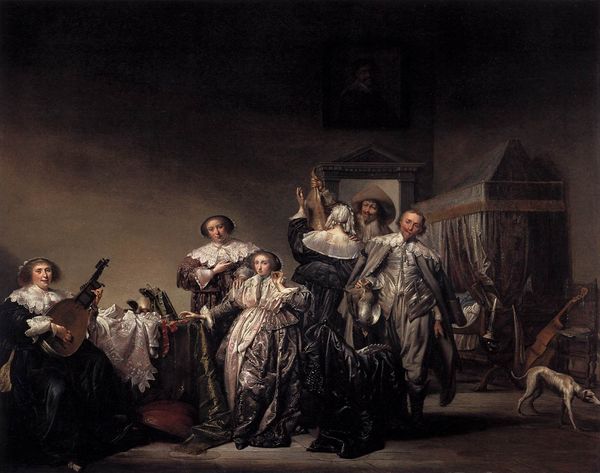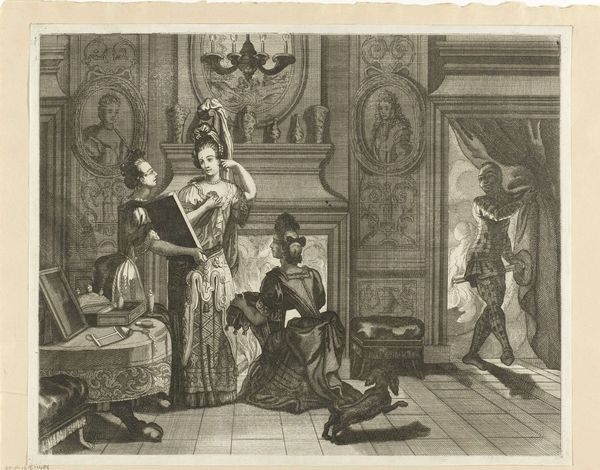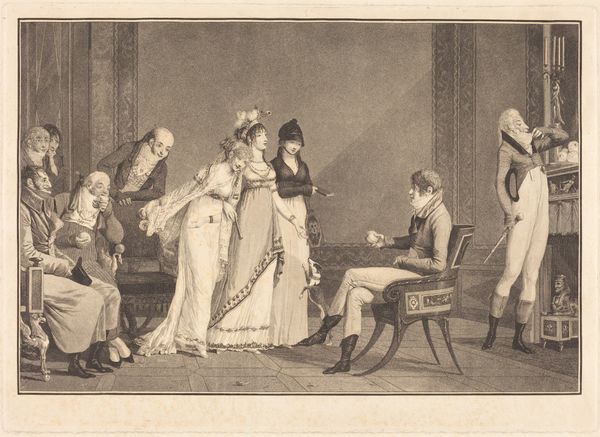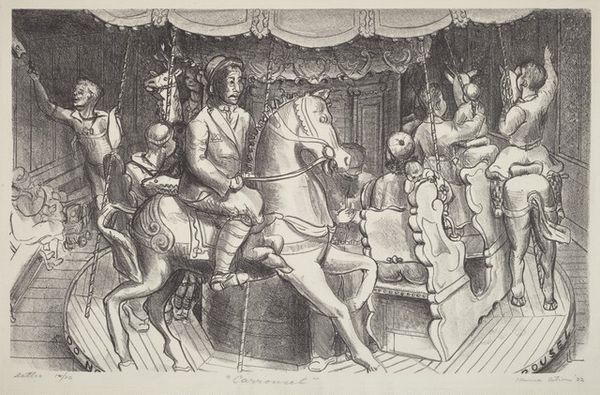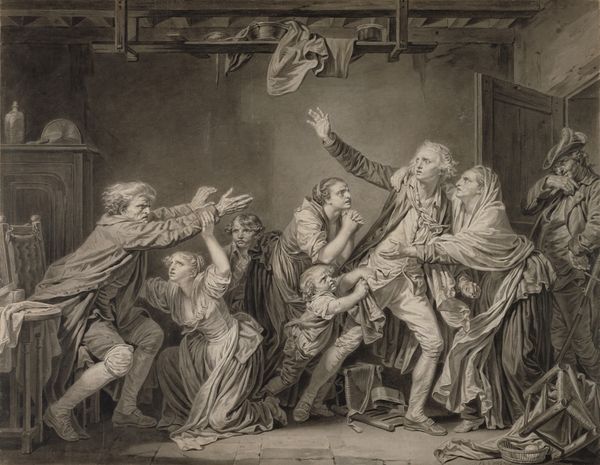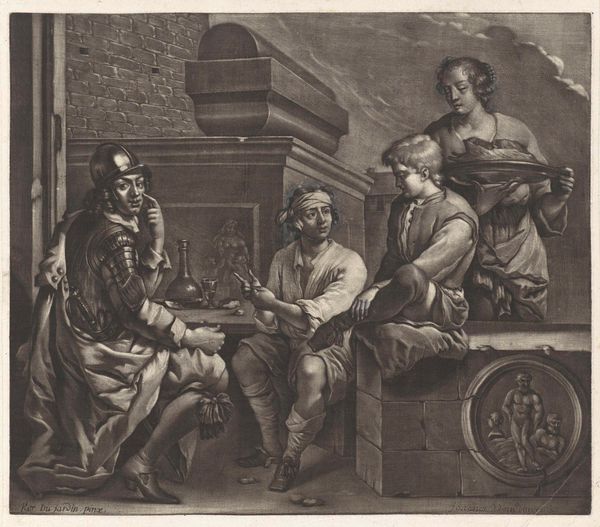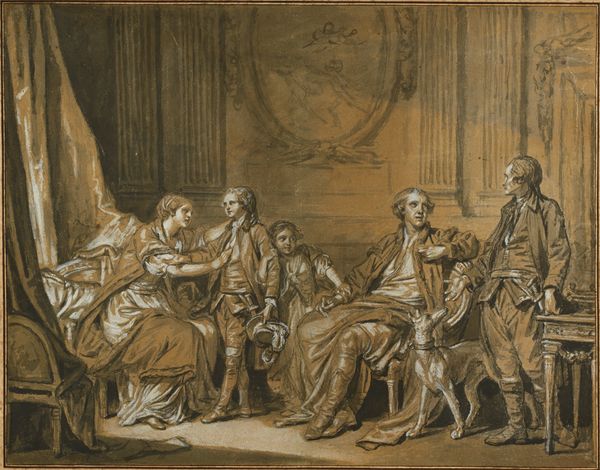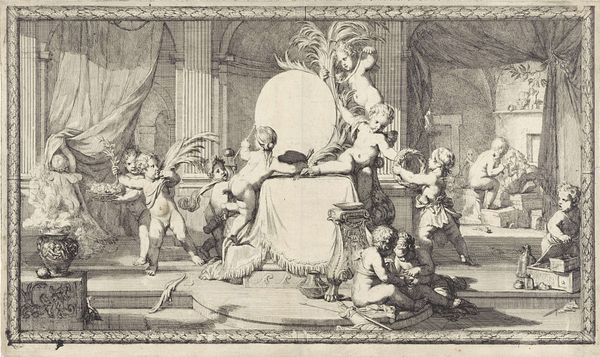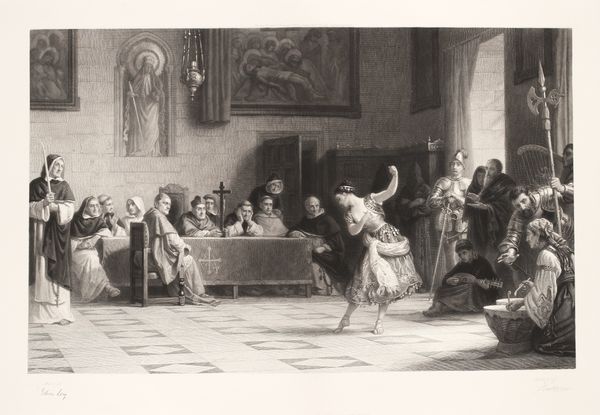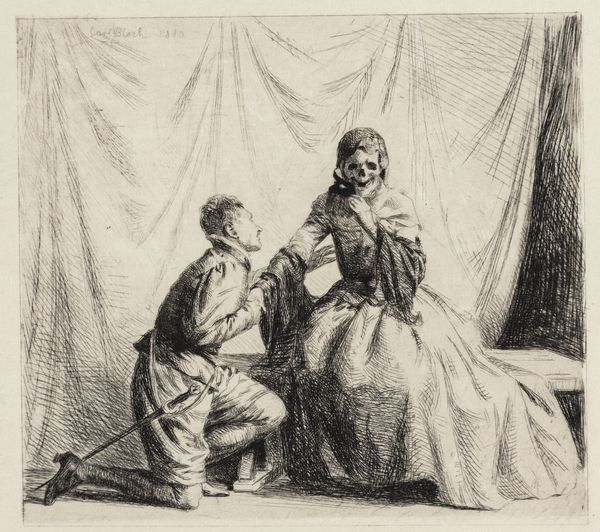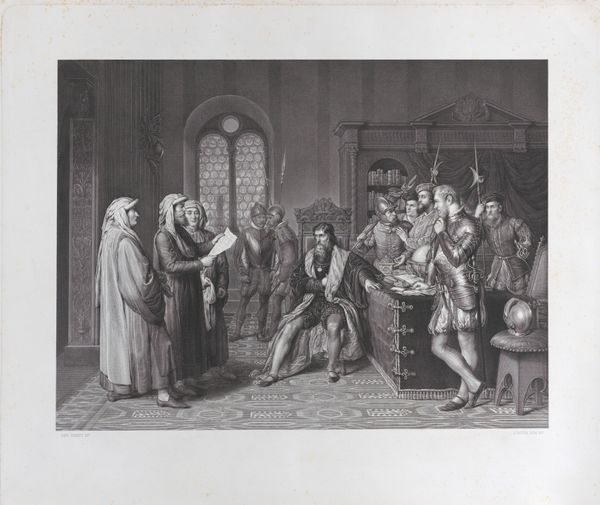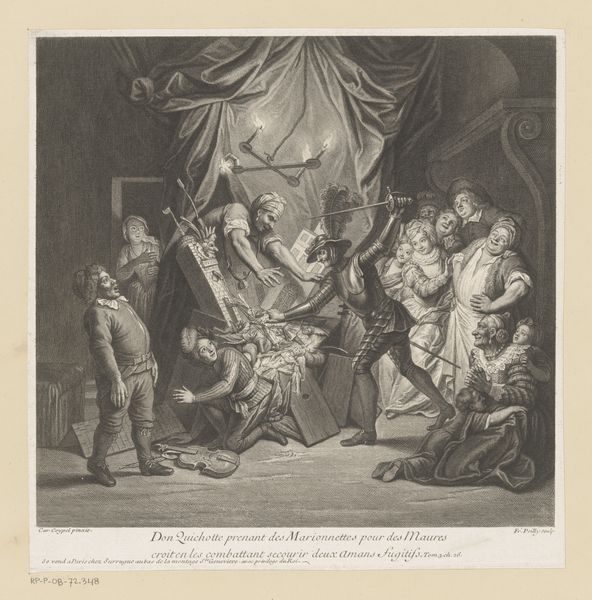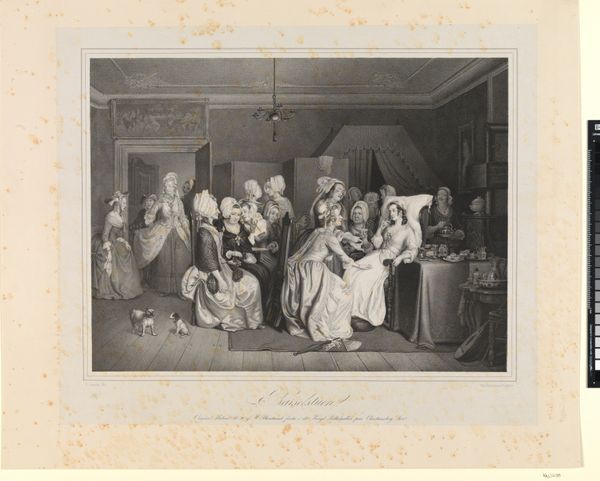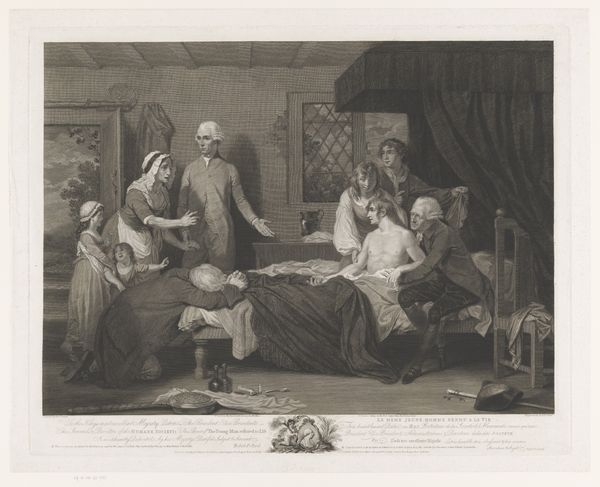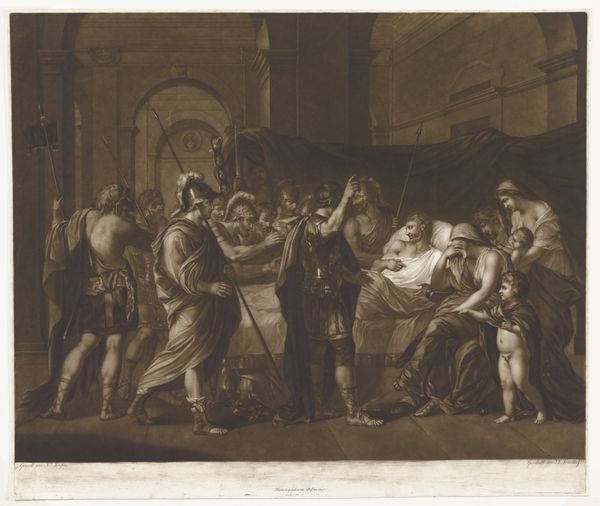
Copyright: Yinka Shonibare,Fair Use
Curator: Welcome to this exploration of Yinka Shonibare’s "FAKE DEATH PICTURE (THE DEATH OF ST FRANCIS, BARTOLOMEO CARDUCHO)", created in 2011 using photography and mixed media. Editor: Immediately, the visual texture grabs you. The baroque drama set against that vibrant Dutch wax fabric is a striking juxtaposition. There is a material richness here, almost theatrical in its intensity. Curator: Indeed. Shonibare here masterfully appropriates the composition and subject matter from historical painting, specifically referencing Bartolomeo Carducho's original depiction of The Death of St Francis. Note the careful arrangement of figures and the use of light and shadow to create depth and draw the eye. The entire mise-en-scène speaks volumes about how Shonibare uses structure to create meaning. Editor: Absolutely. Thinking about that fabric – its industrial production, its circulation, its complicated symbolism tied to colonial trade routes – it re-frames the entire narrative. We are pushed to ask not only *who* is dying, but *what* is dying. This is a portrait made to be consumed. The social fabric is very apparent in this composition. Curator: Precisely, Shonibare's interweaving of Western art history with the signifiers of post-colonial identity disrupts the supposed neutrality of the original composition. The very act of restaging a classic using culturally loaded materials allows us to question canonical art historical narratives. Editor: And those costumes, the careful crafting of identity – the labour involved! The wigs, the garments…these elements transform this scene. There's a real attention to detail which makes you consider how images were produced, perceived, and disseminated historically in a world so very different from now, and so like it. Curator: Yes, his strategy destabilizes not just art historical tropes, but notions of authenticity, authorship, and representation itself. Editor: What’s fascinating is considering the implications of photography as a medium here. The performativity that has occurred here becomes paramount. We get the sensation that Shonibare wants us to witness the unmaking of our certainties. Curator: Thank you for these important perspectives, highlighting how both the artistic form and its underlying context influence our reading. Editor: A striking example of how re-working imagery, literally using different material, generates important perspectives on production, labor and social power.
Comments
No comments
Be the first to comment and join the conversation on the ultimate creative platform.
